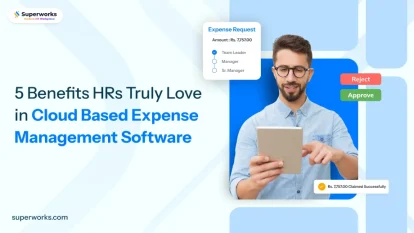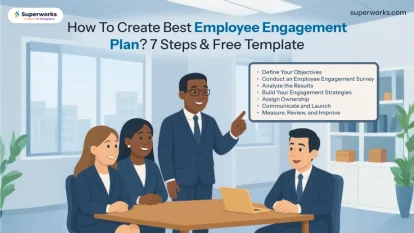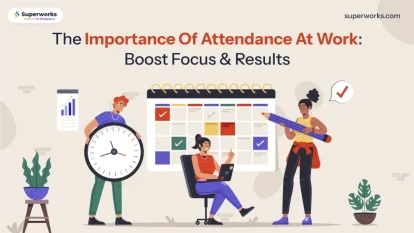
Induction and onboarding represent the very first steps in a series of important processes in the business world today. It provides fresh entrants with a working opportunity to familiarize themselves with their workplace, and company culture, and join their teams. An induction program well designed will increase employee engagement, reduce turnover, and churn, and lead to a positive workplace culture. This article serves to explain what induction and onboarding are, the differences between them, the stages involved, and some of the best practices that should be observed for the easy integration of new employees.
Induction and Onboarding
Induction is the first process of introducing an individual to the organization. Induction involves a set of processes and activities that facilitate learning by a new joiner about the company’s policies, values, and culture. Most Induction in HRM functions provides induction, which involves an introduction to colleagues, the structure of the company, and other available resources.
Onboarding is a wider and longer process that goes beyond the initial induction purpose stage. It’s about getting the new hire acclimated to their job and team, making sure they have training and support to do their job.
what is induction in HRM?
Induction within Human Resource Management is the process that is involved in bringing new employees into an organization, its culture, policies, and their specific roles. This process is intended to acclimate new hires to their work environment, inform them of responsibilities, and induct them harmoniously into a team, thereby making them feel welcomed, supported, and informed for them to be better conditioned for work, reduce turnover, and increase productivity.
Key Elements of an Effective Induction Program:
- Welcome and Orientation: General information regarding the organization, its mission, vision, and values.
- Introduction to Teams and Departments: Talking to colleagues, team members, and department heads.
- Role-Specific Training: Job information, expectations, and performance metrics details.
- Administrative Tasks: Paperwork, getting familiar with HR policies, and getting familiar with one’s working space.
- Mentorship and Support: Assignment of a mentor or buddy who can guide and answer questions.
What is induction and what isn’t?
While induction and onboarding are used interchangeably, they serve different purposes and timelines:
- Duration: Induction takes a few days or weeks at most, and onboarding several months up to a year depending on the organization and role.
- Focus: Induction focuses on introducing a new employee to the organization as a whole. That is, introducing the latter to the organization’s people, processes, and culture. On the other hand, onboarding statistics refers to preparing the former with skills and knowledge in their role.
- Objectives: Induction makes the employees aware of the company culture and what is expected from them. Onboarding makes the new employee feel supported, connected, and integrated into his/her roles and teams.
Induction Stages
The induction process can be broken down into several stages, each to help new employees settle in.
1. Pre-Onboarding Process
preboarding software/ Pre-Onboarding is very critical before a new employee joins the company. This stage includes:
- Welcome Emails: Sending welcome emails to new joiners with all the essential information for their first day including logistics and what to expect.
- Resource Preparation: Providing access to digital resources, employee handbooks, training materials, and relevant documentation. This can include dress code, attendance policies, and workplace etiquette.
- Account Setup: Setting up all necessary accounts and equipment including email accounts, software access, and workspace arrangements. So new joiners feel ready and supported from day one.
2. First Day Activities
The first day is a big milestone in the employee experience. Key activities during this stage include:
- Welcome Session: A warm welcome from the team and leadership can make new joiners feel valued. It can also be an introduction to key personnel and a brief history and mission of the organization.
- Company Overview: It is pretty important to present the organization’s mission, vision, and values. This should include the importance of company culture and how each employee induction contributes to it.
- Office Tour: It enables new employees to familiarize themselves with the place as guided on tour including key places such as meeting rooms, break areas, and emergency exits. This helps to reduce anxiety and have a feeling of belonging in the team.
3. Initial Training and Orientation
After the first day, structured training and orientation sessions are crucial. This stage includes:
- Job-Specific Training: Training sessions tailored to the skills and knowledge required for the role. This could be shadowing experienced colleagues, workshops, or e-learning platforms.
- Resources and Tools: Introducing new joiners to the tools, software, and resources they will use in their daily tasks. This might even extend to training a staff member on its use in its Indian operation, perhaps on HRMS software in India it uses for payroll and HR functions.
- Mentorship Program: Coupling new employees with a mentor or buddy to help with the integration. This mentor can answer questions, provide guidance, and help the new joiner navigate the company induction culture.
Ready to enhance your induction and onboarding processes by 65%?
Explore our cloud-based HRMS software to streamline employee integration and improve engagement today!
4. Follow-Up
Post-induction follow-up is key to ongoing support and engagement. Key follow-up activities should include:
- Regular Check-Ins: Regular check-ins with new members every week at 3-month and one-month intervals to assess how they’re doing and resolve any issues they might have. These check-ins can be for feedback and discussion about their experience.
- Gathering Feedback: Gathering feedback on the induction and onboarding process is critical. This could be through surveys or informal interviews so that the organizations can make suitable refinements to their programs through employee feedback.
- Reinforcing Culture and Values: Reinforcing culture and values across the HR onboarding process allows newly inducted employees to take them into their systems and apply them in their daily work.
5. Induction in HR
Having an induction process is critical for organizations to improve employee satisfaction and retention. This means:
- Designing a Structured Induction Programme: Organizations should have a program that delineates the major activities, timelines, and resources needed to be managed to complete a smooth induction. A structured program ensures consistency and breadth in the process of onboarding new joiners.
- Personalizing the Experience: Tailoring the induction process in hr to different roles and departments is essential. Personalisation means new joiners feel valued and their induction is relevant to their job function.
- Using Technology: Using cloud-based HRMS software and other digital tools can streamline the stages of induction process and provide easier access to information. They can carry learning assets, company policies, and communication avenues that update new entrants regularly.
Best Practices for Onboarding and Induction
Best practices for successful onboarding and induction must have the following:
1. Personalisation
Every new joiner is unique and their onboarding experience should reflect this. Personalizing the induction process based on individual roles, backgrounds, and preferences can make a big difference. This could mean adjusting training modules, mentorship pairings, or resources based on the new joiner’s specific needs.
2. Using Technology
Using digital employee onboarding platforms can simplify the HR induction process. These tools provide resources, training modules, and communication channels so new joiners can access information and connect with their teams easily. All features such as virtual tours, chatbots for FAQs, and online forums will enhance the experience of onboarding.
3. Continuous Improvement
Feedback from new joiners about their induction experiences is, thus important for continuous improvement. Organizations should also update and review their induction programmes periodically to deal with changing employee needs and expectations. This is an iterative process; therefore, the onboarding experience should become better and different with time.
Overcoming Challenges in Induction and Onboarding
Certain issues may occur even with the best of intentions during the induction and onboarding processes in organizations. Common challenges are:
- Engagement of Distant Employees: The rise of telecommuting necessitates that the induction programs of organizations be revamped so that remote employees are reached and integrated with the team. That may call for virtual onboarding tools and setting up digital spaces where they can get to know each other.
- Time Pressure: Integrating onboarding with routine job work may be challenging. If the time and expectations for the onboarding process are clearly defined, the new joiners can manage their daily tasks and work on their induction and onboarding processes employee onboarding.
Measuring Onboarding Success
The organization should also measure the effectiveness of induction and onboarding to understand how well they are doing. The following KPIs are to be measured:
- Employee Satisfaction: To know about the overall job satisfaction, survey the new joiners regarding the onboarding experience. Know how things are going around and where you need improvements.
- Retention Rates: Compare the turnover of new joiners – this clearly indicates the efficiency of the induction process. More is the retention rates, the better has the induction been.
- Performance Metrics: Calculate the performance of newly hired employees after the onboarding cycle to determine how well they adjust to their new jobs. Productivity levels, achievement of set goals, and contribution to team projects would give insight into the merchant onboarding process.
Summary
Induction and onboarding are very critical to keeping and engaging employees. Investing in a structured induction program, following best practices, may allow organizations to design a great new joiner experience and set them up for long-term success. The form of the workplace transforms along with the need to change it, and, as such, there is an imperative need for the application of agility to the induction and onboarding processes. Good induction and onboarding benefit the new employee and the organization as a whole, making the new employee feel a sense of belonging and connection, engaging that leads to increased productivity.





